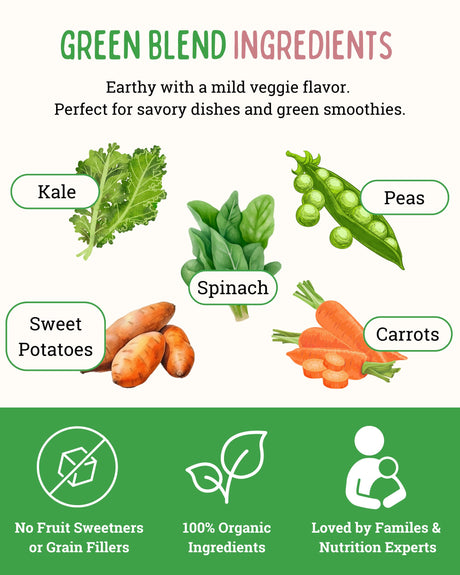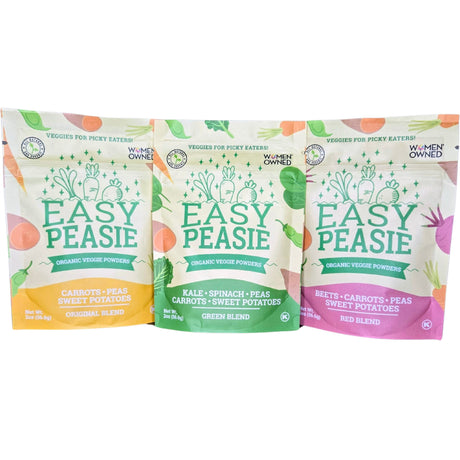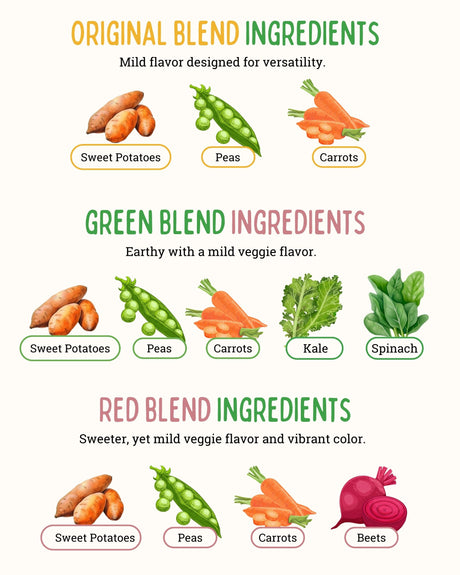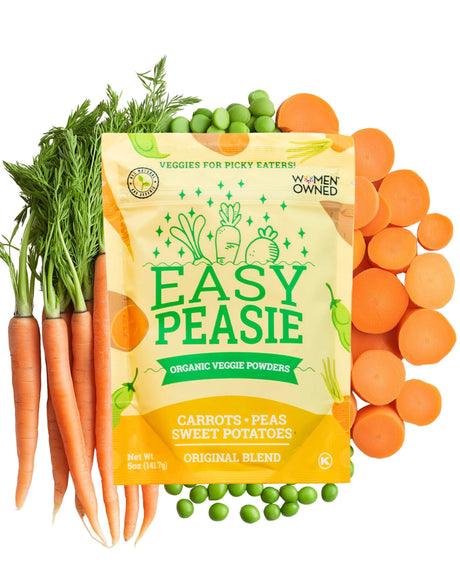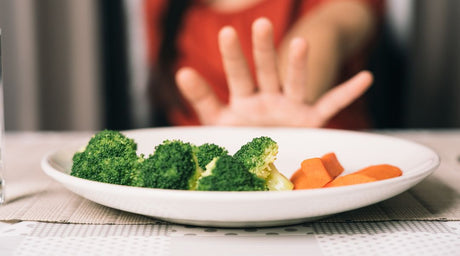Embracing the Seasonal Shift: Allergies in the Air
As the vibrant colors of fall paint the trees and the crispness of the season fills the air, there's an undeniable charm that autumn brings. But with this picturesque transition from the warm embrace of summer to the cozy blanket of fall, there's a less enchanting side: the onset of seasonal allergies.
For many, the falling leaves signal more than just a change in the landscape; they mark the beginning of sneezes, sniffles, and itchy eyes.
Preparation is Key
Understanding the allergens that come with the fall season is crucial. Just as we swap out our summer wardrobes for warmer attire, it's equally important to gear up our bodies and homes to tackle the common culprits of fall allergies.
Being prepared isn't just about seeking relief; it's about enhancing our overall well-being, ensuring that we can fully enjoy the pumpkin-spiced delights and sweater-weather outings without the constant discomfort of allergic reactions. After all, knowledge is power, and in this case, it's the power to breathe easier and live fully amidst the autumn leaves.
Understanding Allergies
Demystifying Allergies
At the heart of our sneezes and sniffles lies a complex reaction our bodies are having to seemingly harmless substances. But what exactly are allergies?
In essence, allergies are our body's overzealous response to foreign substances, known as allergens. While these allergens are typically non-threatening (think pollen or pet dander), our immune system perceives them as potential dangers, triggering a defensive response.

The Immune System's Role
Our immune system is our body's personal security detail, always on the lookout for potential threats. When it encounters an allergen, it mistakenly identifies it as an invader, much like a virus or bacteria.
In response, the immune system produces antibodies called immunoglobulin E (IgE). These antibodies then cause certain cells to release chemicals, including histamine, into the bloodstream. It's these chemicals that bring about the familiar symptoms of allergies – from the watery eyes to the runny nose.
Think of it as the body's alarm system going off, even when there's no real danger. Understanding this process is key to finding relief and managing allergic reactions effectively.
Common Fall Allergens
Ragweed Pollen: Fall's Sneaky Offender
When we think of fall, we often envision colorful leaves and cooler temperatures. However, for many, fall also brings the unwelcome presence of ragweed pollen.
This pesky plant releases its pollen from August to November, with its peak in mid-September. While it's commonly found in rural areas of the East and Midwest, its lightweight pollen can travel for hundreds of miles, making it a widespread allergen.
For those sensitive to it, ragweed pollen can trigger sneezing, itchy eyes, and other familiar allergy symptoms.
Mold Spores: The Damp Culprit
As the air turns cooler and damper, mold spores begin to thrive, especially in areas with fallen leaves and rotting vegetation. These tiny spores can be inhaled, leading to allergic reactions in sensitive individuals.
Basements, compost piles, and damp areas in the home can also be hotspots for mold growth. Regularly clearing leaves and ensuring good ventilation can help in reducing exposure.
Dust Mites: Fall's Tiny Invaders
While dust mites are present year-round, they often see a surge during the fall. As we start spending more time indoors and turning on heating systems, dust mites find a cozy environment to multiply.
These microscopic creatures thrive in bedding, upholstery, and carpets. Their waste products, though tiny, can be potent allergens, leading to symptoms like sneezing, runny nose, and even asthma in some individuals.
Outdoor Fungi: Not Just a Forest Thing
Fungi, including mushrooms, toadstools, and mildews, are more than just forest floor dwellers. They're also common fall allergens. Spores from these fungi are released into the air and can be inhaled, causing allergic reactions.
While some types of fungi are visible and easy to spot, others, like airborne spores, are invisible to the naked eye but can still cause significant discomfort. Being aware and limiting exposure, especially during damp conditions, can make the fall season more enjoyable for allergy sufferers.
Symptoms to Watch Out For
Respiratory Symptoms: More Than Just a Cold
As the leaves begin to fall and the air turns crisp, many of us might mistake allergy symptoms for the common cold. Sneezing, coughing, and wheezing can all be telltale signs of an allergic reaction. Unlike a cold, which might come with body aches or a fever, these respiratory symptoms can persist or appear suddenly after exposure to an allergen. It's essential to recognize these signs early, as prolonged exposure can exacerbate symptoms and lead to more severe respiratory issues.
Skin Reactions: The Allergic Touch
While we often associate allergies with sneezing or watery eyes, our skin can also react to fall allergens. Rashes and hives, those itchy, raised welts on the skin, can be a direct response to allergens in our environment. Whether it's from direct contact, like brushing against a moldy leaf, or something more systemic, these skin reactions are a clear signal that something is amiss. Keeping skin covered, especially during activities like raking leaves, can help reduce direct contact with allergens.
Eye Irritations: Seeing the Signs
Our eyes are particularly sensitive to allergens. Itchy, watery eyes can be one of the first signs that we've come into contact with something our body doesn't like. The protective nature of tears can lead to watery eyes as the body tries to flush out the allergen. Rubbing them, tempting as it might be, can exacerbate the irritation. Instead, consider over-the-counter eye drops or saline solutions to soothe and cleanse the eyes during peak allergy seasons.
Prevention and Management
Home Care: Creating an Allergen-Free Sanctuary
Our homes should be our safe havens, especially when it comes to allergens. One of the most effective ways to combat indoor allergens is by using air purifiers. These devices can help filter out common allergens like dust mites, pollen, and mold spores, ensuring the air you breathe is cleaner.
Additionally, regular cleaning, including vacuuming and dusting, can significantly reduce allergen buildup. Consider using hypoallergenic pillowcases and mattress covers to further protect against dust mites.
Outdoor Precautions: Navigating the Allergic Outdoors
While we can't control the great outdoors, we can take steps to minimize our exposure to allergens. Before planning outdoor activities, it's a good idea to check the pollen count.
Many weather apps and websites provide daily pollen forecasts, helping you choose the best times to venture out. On high pollen count days, try to stay indoors during peak times, typically early morning and late afternoon.
And remember, after spending time outside, change your clothes and take a shower to wash off any allergens that might have hitched a ride.
Dietary Considerations: Nourishing the Allergic Body
Believe it or not, the foods we eat can play a role in how our bodies respond to allergens. Some foods have natural antihistamine properties, which can help combat allergic reactions.
Quercetin, found in apples, berries, and onions, is one such compound. Omega-3 fatty acids, abundant in fatty fish like salmon, have anti-inflammatory properties that might help reduce allergy symptoms. Additionally, probiotics found in yogurt and fermented foods can support gut health, which some studies suggest might be linked to allergy responses.
As always, it's essential to consult with a healthcare professional before making significant dietary changes.
Treatment Options
Over-the-Counter Medications: Quick Relief at Your Fingertips
When allergy symptoms strike, many of us turn to the pharmacy aisle for relief. Over-the-counter (OTC) antihistamines are a popular choice, helping to block the body's histamine response and alleviate symptoms like sneezing, itching, and runny nose.
Nasal corticosteroids, available as sprays, can reduce inflammation and are especially effective for nasal symptoms. Decongestants can also be helpful, but it's essential to use them sparingly and as directed, as they can have side effects or cause rebound congestion if overused.
Prescription Treatments: Tailored Allergy Solutions
For those with more severe or persistent allergies, prescription treatments might be the way to go. Prescription antihistamines, nasal corticosteroids, and other specialized medications can offer targeted relief.
Some people benefit from allergy shots (immunotherapy), which involve regular injections with increasing allergen doses to help the body build tolerance over time. Always consult with an allergist or healthcare professional to determine the best treatment plan tailored to your needs.
Natural Remedies and Holistic Approaches: Mother Nature's Antidote
For those inclined towards natural solutions, there are several holistic approaches to consider. Butterbur, a herb, has shown promise as a natural antihistamine. Quercetin, a plant pigment found in many fruits and vegetables, can also help stabilize the release of histamines.
Neti pots, which involve rinsing the nasal passages with a saline solution, can help clear out allergens and mucus. Additionally, acupuncture has been explored as a potential treatment for allergies, with some individuals reporting relief.
As with any treatment, it's crucial to research, consult professionals, and ensure that natural remedies don't interact with other medications or conditions.
Special Considerations for Kids
Recognizing Allergy Symptoms in Children: Little Signs to Look Out For
Children, with their boundless energy and zest for life, might not always communicate when they're feeling under the weather. Allergy symptoms in kids can sometimes be mistaken for colds or other illnesses.
Common signs include persistent sneezing, a runny or stuffy nose, itchy or watery eyes, and frequent throat clearing. Some children might also exhibit behavioral symptoms, like increased irritability, difficulty concentrating, or fatigue. It's essential to observe and listen to your child, noting any patterns or triggers that might indicate allergies.
Safe Treatments and Remedies for the Young Ones: Gentle Care for Delicate Systems
When it comes to treating allergies in children, safety is paramount. While many over-the-counter antihistamines have pediatric dosages, it's crucial to consult with a pediatrician before administering any medication.
Some natural remedies, like saline nasal rinses or honey (for children over one year of age), can offer relief. However, always ensure that any treatment, natural or otherwise, is age-appropriate and safe for your child.
Parental Tips for a Comfortable Fall Season: Keeping the Sniffles at Bay
As the leaves turn and the air gets crisper, parents can take proactive steps to ensure their kids remain comfortable during the fall allergy season. Encourage your children to change clothes and wash their hands after playing outside, reducing the chance of bringing allergens indoors.
Using allergen-proof bedding can also make a significant difference. On days when pollen counts are high, consider indoor activities or outings in areas less affected by allergens, like the beach.
Lastly, open communication is key. Teach your children to recognize and communicate their symptoms, ensuring they get the relief they need when they need it.
Final Thoughts
Proactivity: The First Step in Managing Fall Allergies
As the golden hues of fall paint the landscape, it's a reminder that while nature is at its most picturesque, it also brings along its set of challenges, notably allergies. Being proactive is the cornerstone of managing these seasonal sniffles.
By understanding the common allergens, recognizing symptoms, and implementing preventive measures, you can significantly reduce the impact of allergies on your daily life.
Seeking Expert Guidance: Your Health's Best Ally
While articles and blogs provide a wealth of information, nothing replaces the personalized advice of a healthcare professional. Everyone's body is unique, and what works for one might not work for another. Consulting with an allergist or primary care physician ensures that you get recommendations tailored to your specific needs, ensuring optimal health and comfort.
Embrace the Fall: Allergies Shouldn't Dampen the Spirit
The fall season, with its cozy sweaters, pumpkin-spiced treats, and scenic beauty, is one to be cherished. And allergies shouldn't come in the way of that. With the right knowledge and tools at your disposal, you can navigate this season with ease.
So, here's a call to action for all our readers: Prepare, be informed, and dive headfirst into the joys of fall, leaving the discomfort of allergies behind. Let's make the most of this beautiful season!



